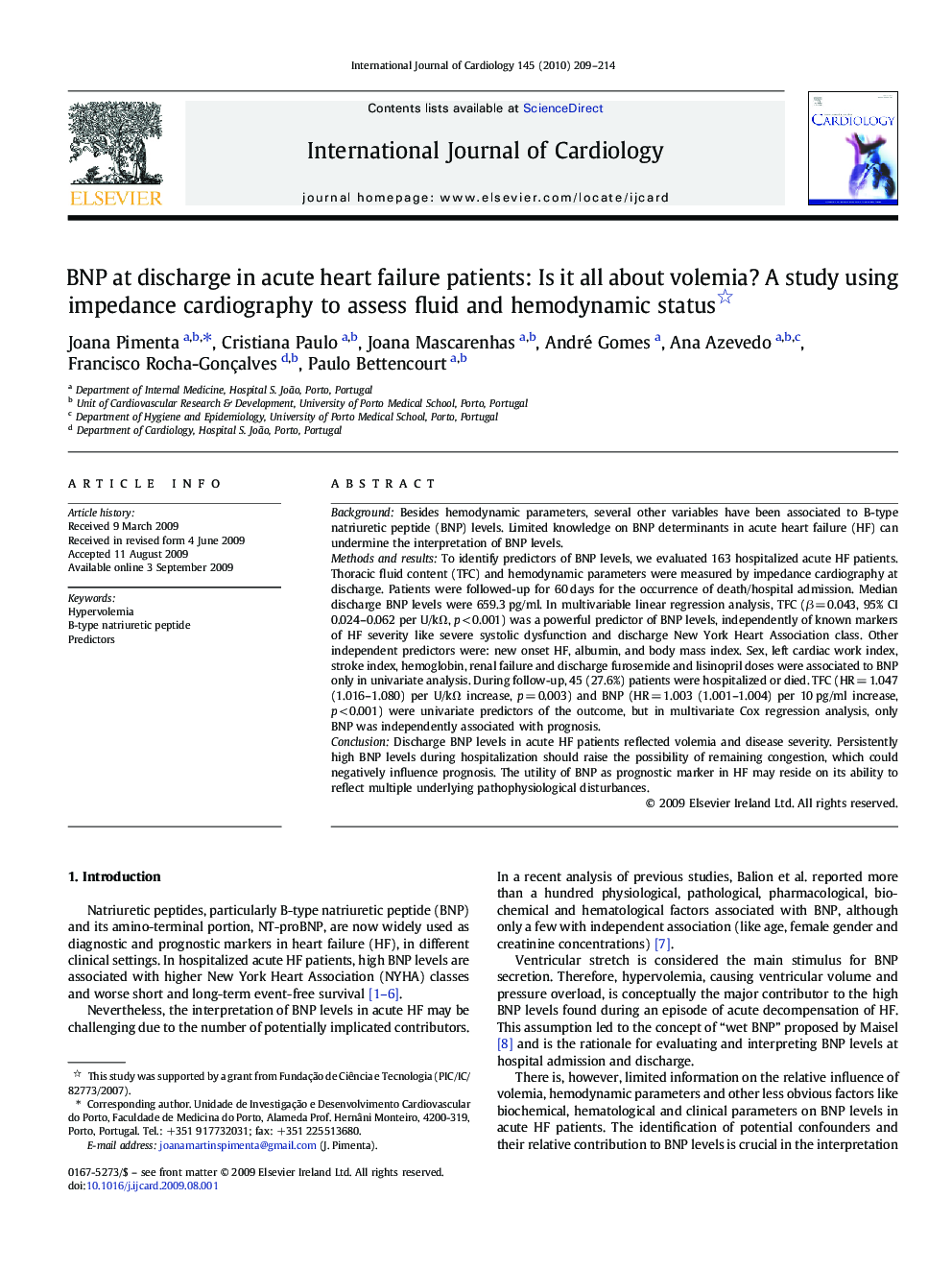| کد مقاله | کد نشریه | سال انتشار | مقاله انگلیسی | نسخه تمام متن |
|---|---|---|---|---|
| 2931784 | 1576289 | 2010 | 6 صفحه PDF | دانلود رایگان |

BackgroundBesides hemodynamic parameters, several other variables have been associated to B-type natriuretic peptide (BNP) levels. Limited knowledge on BNP determinants in acute heart failure (HF) can undermine the interpretation of BNP levels.Methods and resultsTo identify predictors of BNP levels, we evaluated 163 hospitalized acute HF patients. Thoracic fluid content (TFC) and hemodynamic parameters were measured by impedance cardiography at discharge. Patients were followed-up for 60 days for the occurrence of death/hospital admission. Median discharge BNP levels were 659.3 pg/ml. In multivariable linear regression analysis, TFC (β = 0.043, 95% CI 0.024–0.062 per U/kΩ, p < 0.001) was a powerful predictor of BNP levels, independently of known markers of HF severity like severe systolic dysfunction and discharge New York Heart Association class. Other independent predictors were: new onset HF, albumin, and body mass index. Sex, left cardiac work index, stroke index, hemoglobin, renal failure and discharge furosemide and lisinopril doses were associated to BNP only in univariate analysis. During follow-up, 45 (27.6%) patients were hospitalized or died. TFC (HR = 1.047 (1.016–1.080) per U/kΩ increase, p = 0.003) and BNP (HR = 1.003 (1.001–1.004) per 10 pg/ml increase, p < 0.001) were univariate predictors of the outcome, but in multivariate Cox regression analysis, only BNP was independently associated with prognosis.ConclusionDischarge BNP levels in acute HF patients reflected volemia and disease severity. Persistently high BNP levels during hospitalization should raise the possibility of remaining congestion, which could negatively influence prognosis. The utility of BNP as prognostic marker in HF may reside on its ability to reflect multiple underlying pathophysiological disturbances.
Journal: International Journal of Cardiology - Volume 145, Issue 2, 19 November 2010, Pages 209–214